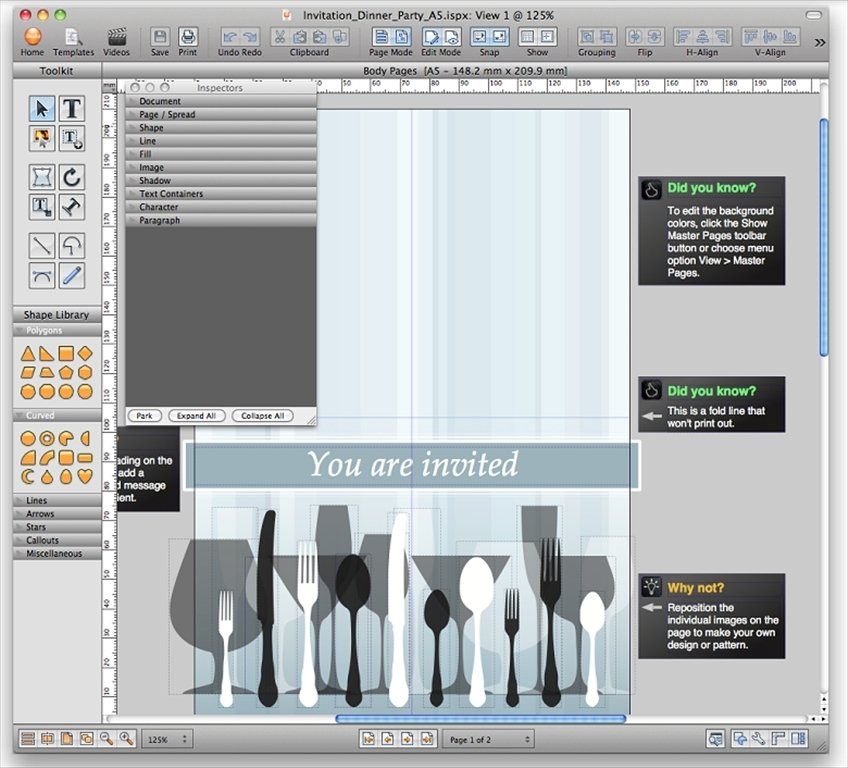
- INITIAL CAP IN ISTUDIO PUBLISHER HOW TO
- INITIAL CAP IN ISTUDIO PUBLISHER MAC OS X
- INITIAL CAP IN ISTUDIO PUBLISHER PDF
- INITIAL CAP IN ISTUDIO PUBLISHER FULL
- INITIAL CAP IN ISTUDIO PUBLISHER PROFESSIONAL
There are a couple of ways to find real small caps in Adobe Creative Cloud software. Another way is to look for them through the OpenType panel, described below for InDesign. One way, in InDesign, Photoshop, or Illustrator, is to look in the Glyphs panel, where they often appear under the subset Small Capitals From Capitals.
INITIAL CAP IN ISTUDIO PUBLISHER HOW TO
So you should check for them before purchasing a font and know how to find them in the fonts you already own. This does not mean that all OpenType fonts contain small caps. In some cases, separate fonts were created for these older formats to include small caps and other desirable glyphs, but most did not have them at all. In contrast, the older Type 1 and TrueType font formats have a very limited character complement, and therefore do not have room to include many special characters.

This is because OpenType can accommodate a very large number of glyphs. The only fonts you’ll find with true small caps built into their character complement are OpenType fonts. The difference between the true-drawn and the fake small caps is easy to see in these two examples: the fake, computer-generated ones are too light, and frequently too narrow and tightly spaced, while the true small caps blend in beautifully. What’s more, programs like InDesign can be misleading, offering fake small caps without warning. While many designers are aware of small caps and apply them to their work, they often don’t know the difference between true-drawn small caps and the fake, computer-generated variety that are considered a type crime by those in the know. In spite of their usefulness, small caps are a frequently overlooked, as well as misused, feature of typesetting.

INITIAL CAP IN ISTUDIO PUBLISHER FULL
Small caps can also be used alongside full caps (this combination is referred to as cap and small cap), for title pages, book and magazine headers and footers, film and video titling, logos, letterheads, and many other applications. When used with small text, they are frequently applied as a lead-in to lengthy copy in magazines, book chapters, brochures, and other written materials. They are a very useful feature for both text and display type. IStudio Publisher 1.0.4 received a generally favourable review by Macworld on Mar 9, 2009.Small caps are capital letterforms that usually approximate the height of the lowercase, but can be taller in certain fonts. Video tutorials and a Rapid Start Guide are also available.
INITIAL CAP IN ISTUDIO PUBLISHER PDF
The official user guide " Introduction to iStudio Publisher" has been produced using iStudio Publisher and can be downloaded from the developer's website in PDF format. Arabic, Hebrew, Indic and East_Asian ( CJK) writing systems. Using right-to-left languages, such as Arabic, Persian and Hebrew can be achieved by using RTL Fixer ( ). iStudio Publisher has an XML based file format and supports Unicode character encoding. It can also export to booklet PDF, EPUB or RTF file.
INITIAL CAP IN ISTUDIO PUBLISHER PROFESSIONAL
IStudio Publisher can export colour managed PDF files suitable for use in a prepress workflow for professional print jobs. Inspectors are provided to examine and adjust style and format settings of shapes, text and images. Users can select and draw standard shapes from the Shape Library, construct shapes using the drawing tools provided, or create default shapes automatically when pasting, dragging in or inserting new content. All shapes act as content containers and can contain any combination of text in columns, text around their outline path, an image, a corner style, a line style, a fill style, a drop shadow and a text runaround ("wraparound"). Users are required to understand one main principle - each element of document content is held by a shape.

IStudio Publisher has been designed to simplify desktop publishing and enable users to get started quickly. IStudio Publisher can be used for the page layout and word processing of brochures, newsletters, booklets, magazines, posters, adverts, reports, essays, greeting cards and many other document types, of any page size, and with the option of spread editing facing pages.
INITIAL CAP IN ISTUDIO PUBLISHER MAC OS X
iStudio Publisher 1.1.10 is available to run on Mac OS X 10.5 Leopard, and 10.4 Tiger. iStudio Publisher 1.2.1 is available to run on Mac OS X 10.6 Snow Leopard. iStudio Publisher 1.4.1 is available to run on Mac OS X 10.8 Mountain Lion, and 10.7 Lion. iStudio Publisher 1.5.2 is available to run on macOS 10.12 Sierra, and Mac OS X 10.11 El Capitan, 10.10 Yosemite, and 10.9 Mavericks. The present version, iStudio Publisher 1.5.4, runs on macOS 11 Big Sur, 10.15 Catalina, 10.14 Mojave, and 10.13 High Sierra. IStudio Publisher 1.0 was released on 6 January 2009 at the Macworld Conference & Expo in San Francisco. IStudio Publisher is a page layout and desktop publishing (DTP) application developed by iStudio Software.


 0 kommentar(er)
0 kommentar(er)
